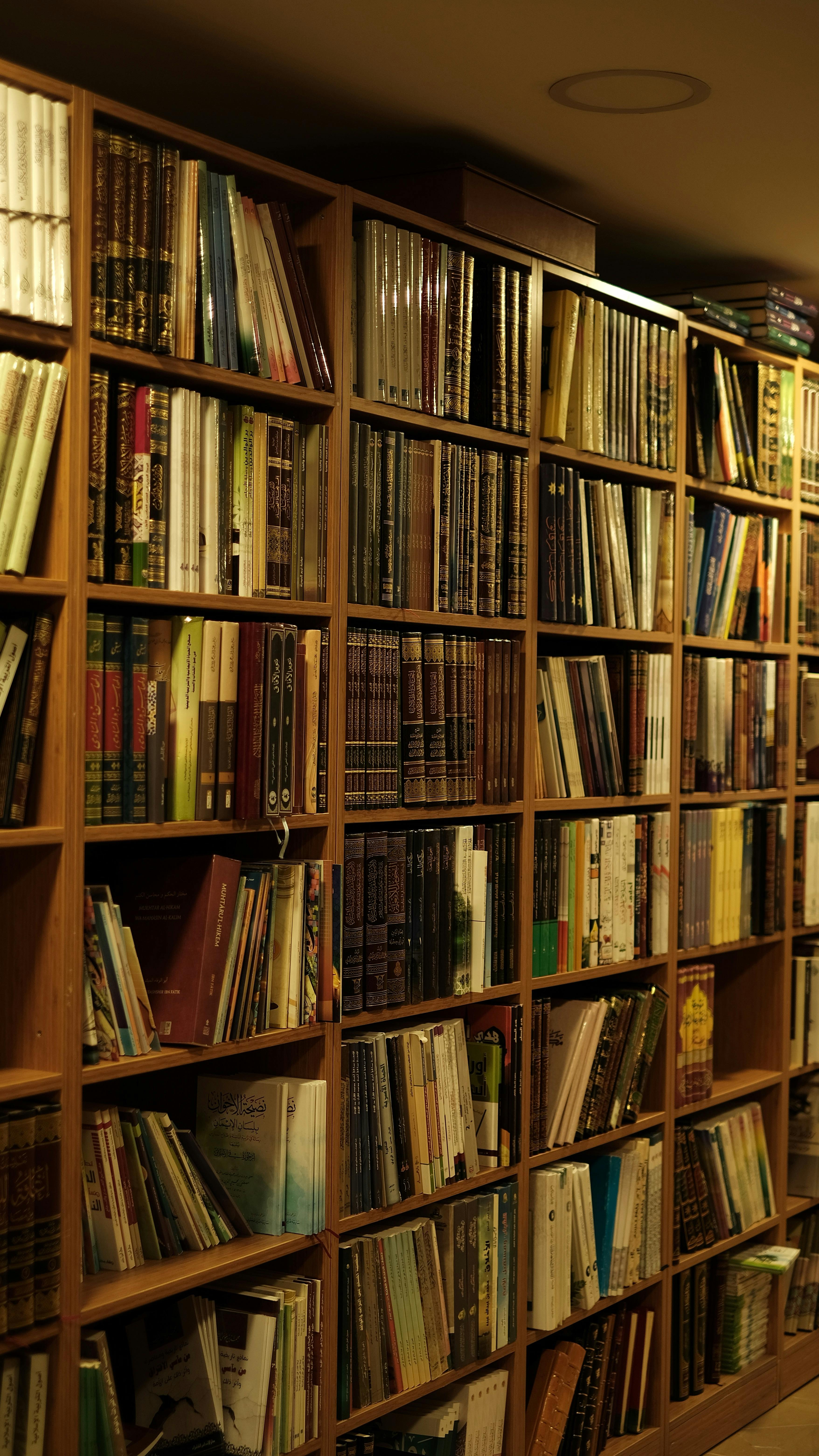Step into the vibrant world of Indian literature as we explore the revolutionary Contemporary Dalit Literature Movement, where marginalized voices rise to challenge the deep-rooted caste hierarchy. In this article, we delve into the powerful storytelling and poetic resistance that emanates from this movement, shedding light on the untold narratives that confront the social injustices faced by Dalits in India. From the influence of timeless epics to the emergence of contemporary authors, we invite you to uncover the linguistic and literary treasures that celebrate India’s rich cultural heritage on IndianCulture.com.

The Historical Context
Caste System in India
The caste system in India is a hierarchical social structure that has been deeply ingrained in Indian society for centuries. It divides people into rigid social strata based on their birth, assigning them specific roles and rights, as well as determining their societal status. The system is rooted in the ancient Hindu scriptures known as the Vedas and classifies individuals into four main castes: Brahmins (priests and scholars), Kshatriyas (rulers and warriors), Vaishyas (merchants and farmers), and Shudras (laborers and servants). At the bottom of this deeply discriminatory social order lies a community historically known as Dalits, also referred to as “untouchables,” who have faced severe oppression and discrimination.
Dalit Community: A Brief Overview
The term “Dalit” means “broken” or “downtrodden” and refers to individuals who have been traditionally regarded as impure and untouchable within the caste system. This community includes a wide range of marginalized and oppressed groups, such as Dalits, Scheduled Castes, Scheduled Tribes, and Other Backward Classes (OBCs). Dalits comprise a significant proportion of India’s population and have historically faced discrimination, social exclusion, and economic exploitation. Despite constitutional safeguards and affirmative action policies, Dalits continue to struggle for equal rights and opportunities in various aspects of life.
Suppression and Discrimination
Throughout history, Dalits have been subjected to systemic discrimination, violence, and social exclusion. They were traditionally assigned menial and degrading occupations, such as scavenging human waste, handling dead animals, and performing other tasks considered “polluting” by upper castes. Dalits faced severe social restrictions, including being denied access to temples, public spaces, education, and even water sources. They were considered untouchable, shunned by society, and treated as subhuman. These oppressive practices have persisted over generations, perpetuating the cycle of discrimination and creating a deep divide within Indian society.
Emergence and Evolution of Dalit Literature
Birth of Dalit Literature
Dalit literature emerged as a powerful voice of resistance against the oppressive social system and caste hierarchies. It originated in the early 20th century with the advent of various social and political movements advocating for the rights of Dalits and other marginalized communities. In the 1920s, leaders like Dr. B.R. Ambedkar, the architect of India’s constitution and a staunch advocate for Dalit rights, played a pivotal role in empowering Dalits and encouraging them to voice their experiences and aspirations through literature. The literary movement gained momentum in the 1960s and 1970s with the rise of Dalit writers and poets who aimed to challenge the status quo through their creative expressions.
Key Themes and Motifs
Dalit literature explores the themes of social injustice, discrimination, exploitation, and the quest for dignity and equality. It delves into the personal narratives and experiences of Dalits, bringing their struggles to the forefront. Motifs such as broken chains, shattered identities, and reclaiming lost heritage are recurring symbols in Dalit literature. These works not only expose the dehumanizing effects of caste-based discrimination but also celebrate Dalit culture, resilience, and the indomitable human spirit.
The Role of Dalit Scholars and Activists
Dalit scholars and activists have played a vital role in the development and promotion of Dalit literature. These individuals have been at the forefront of advocating for social justice and equal rights. They have conducted extensive research, documented oral histories, and written critical analyses of Dalit literature, thereby providing the necessary intellectual framework for the movement. Their relentless efforts to challenge oppressive norms and disseminate knowledge about the Dalit community have contributed significantly to the evolution and recognition of Dalit literature on a global scale.

Characteristics of Contemporary Dalit Literature
Authenticity and Personal Narratives
One of the defining features of contemporary Dalit literature is its authenticity and personal narratives. Dalit writers draw upon their lived experiences to write powerful and emotionally charged accounts of their struggles, hopes, and aspirations. By sharing their stories, they expose the harsh reality of caste discrimination and challenge the dominant narratives perpetuated by the privileged castes. Through their authentic voices, Dalit writers aim to create empathy, understanding, and awareness among readers about the lived experiences and aspirations of Dalits.
Representation of Dalit Identity and Experience
Contemporary Dalit literature places a strong emphasis on representing Dalit identity and experience. It is a conscious effort to reclaim and celebrate Dalit culture, history, and achievements that have been historically suppressed or erased. Dalit writers prominently feature symbols, myths, and folklore from their own communities, giving voice to the marginalized and showcasing the richness of Dalit heritage. By centering their works on Dalit characters and their struggles, these writers assert their right to exist, be seen, and be heard in a society that has long denied them their rightful place.
Engagement with Socio-political Issues
Dalit literature actively engages with socio-political issues and acts as a mirror that reflects the harsh realities of caste-based oppression, social inequality, and structural violence. It brings to light the intersections of caste, class, gender, religion, and other forms of discrimination. Through the exploration of these issues, Dalit literature not only exposes the injustices faced by Dalits but also addresses broader issues of social marginalization and human rights. It serves as a powerful tool for raising awareness, promoting social change, and challenging the status quo.
Prominent Dalit Writers and Their Works
B.R. Ambedkar and ‘Annihilation of Caste’
Dr. B.R. Ambedkar, an intellectual, scholar, and political leader, is often considered the father of the Dalit movement in India. His seminal work, ‘Annihilation of Caste,’ is a powerful critique of the caste system and its oppressive nature. Ambedkar highlights the need to dismantle the caste system and advocates for the annihilation of caste as a necessary step towards achieving social justice and equality. His writings continue to inspire not only Dalit writers but also individuals fighting against all forms of discrimination and injustice.
Mahashweta Devi and ‘Mother of 1084’
Mahashweta Devi, a renowned Bengali writer, addressed Dalit issues and social injustice through her critically acclaimed novel, ‘Mother of 1084.’ The novel explores the life of a mother mourning the death of her revolutionary son and the harsh realities faced by Dalits and marginalized communities. Devi’s evocative storytelling sheds light on the struggles of lower-caste individuals and the oppression they face within a socio-political system that perpetuates injustice.
Omprakash Valmiki and ‘Joothan’
‘Joothan’ is a powerful autobiography by Omprakash Valmiki, a prominent Dalit writer and poet. The book narrates his lived experiences as a Dalit growing up in rural Uttar Pradesh, facing discrimination, and enduring caste-based violence. Valmiki’s honest and poignant account challenges the social order and exposes the inhuman treatment meted out to Dalits. ‘Joothan’ is not just a personal memoir but also a scathing critique of society, compelling readers to confront the realities of caste-based discrimination.

Dalit Literature as a Vehicle of Resistance
Empowering Marginalized Voices
Dalit literature holds transformative power, empowering marginalized voices that have been suppressed and vilified for centuries. It offers a platform for Dalits to assert their identities, reclaim their narratives, and speak truth to power. Through their writings, Dalit authors inspire a sense of pride, self-worth, and resilience among their community members, ultimately challenging the oppressive structures and fostering a sense of collective resistance.
Challenging Caste Hierarchy
Dalit literature actively challenges the deep-rooted caste hierarchy and questions the legitimacy of a system built on discrimination and prejudice. These literary works expose the inherent violence, inequality, and caste-based privileges that have pervaded Indian society for generations. By dismantling the myth of caste superiority, Dalit literature seeks to forge a more inclusive and equitable society that recognizes and respects the inherent dignity and worth of every individual, regardless of their caste or social background.
Deconstructing Stereotypes
Dalit literature serves as a vehicle for deconstructing stereotypes and debunking the prevalent myths perpetuated about Dalits. Through diverse characters and engaging narratives, Dalit writers showcase the multifaceted dimensions of Dalit identity, exposing the stereotypes that have been imposed upon their community. By challenging prejudiced assumptions and highlighting the humanity and complexity of Dalit lives, these writers dismantle the stereotypes that have contributed to the marginalization and oppression of Dalits.
Reception and Impact of Dalit Literature
Recognition and Awards
Dalit literature has gained significant recognition and acclaim both within India and on the international stage. Several prominent Dalit writers have received prestigious literary awards, including the Sahitya Akademi Award, which is one of the highest literary honors in India. The rise in recognition and awards for Dalit literature reflects the growing appreciation for its unique perspectives, powerful narratives, and ability to challenge societal norms.
Mainstream Acceptance and Criticism
While Dalit literature has made significant strides in gaining mainstream acceptance, it continues to face criticism and resistance from the dominant castes and the literary establishment. Some argue that Dalit literature perpetuates victimhood narratives or promotes divisions within society. However, these criticisms often overlook the inherent need to expose and challenge the systemic oppression faced by Dalits. Increasingly, mainstream literary circles are recognizing and valuing the importance of Dalit literature in shaping a more inclusive and just society.
Influence on Social and Political Discourse
Dalit literature has had a profound impact on social and political discourse in India. It has played a pivotal role in raising awareness about caste-based discrimination and promoting conversations around social justice, inequality, and human rights. Dalit literary works have influenced policy debates, as well as shaped the understanding and response to various social issues. The impact of Dalit literature transcends the realm of literature, inspiring movements and initiatives that seek to address structural inequalities and create a more inclusive society.
Dalit Women’s Literature: Intersectionality and Empowerment
Unique Challenges Faced by Dalit Women
Dalit women face intersecting forms of discrimination based on caste, gender, and class. They are at the bottom of the social hierarchy and are often subjected to multiple forms of violence and oppression. Dalit women’s literature highlights the specific challenges they face, including sexual violence, economic exploitation, and social exclusion. It provides a platform for Dalit women to reclaim their agency, challenge patriarchal norms, and assert their identities.
Subversion of Patriarchy
Dalit women’s literature challenges patriarchal norms and stereotypes that perpetuate gender-based discrimination and violence. These literary works give voice to the experiences and struggles of Dalit women, exposing the ways in which caste and gender intersect to compound their marginalization. By subverting patriarchal narratives, Dalit women writers empower themselves and their communities, challenging the oppressive structures that seek to silence and suppress them.
Voices of Dalit Women Writers
Dalit women writers have emerged as powerful agents of change, using their creative expressions to bring attention to the unique experiences and challenges faced by Dalit women. Their writings celebrate the resilience, strength, and agency of Dalit women, offering a counter-narrative to the prevailing stereotypes that have long silenced their voices. Dalit women’s literature serves as a space of resistance, liberation, and inspiration, forging solidarity among Dalit women and fostering dialogue on gender justice and equality.
The Role of Publishing and Translation
Translation as a Tool for Access and Visibility
Translation plays a crucial role in making Dalit literature accessible to a wider audience and increasing its visibility on the national and international stage. By translating Dalit literary works into different languages, barriers to understanding and appreciation are broken down. It allows for cross-cultural exchange, encourages dialogue, and helps bridge the gap between marginalized communities and mainstream readership.
Challenges in Publishing Dalit Literature
Publishing Dalit literature has historically faced significant challenges. The dominant literary establishment has been resistant to recognizing and promoting Dalit voices, often dismissing their works as niche or lacking merit. Dalit writers have had to navigate systemic barriers, including lack of representation, funding, and access to publishing opportunities. However, grassroots initiatives and independent publishers have emerged in recent years, dedicated to amplifying Dalit voices and providing platforms for their works to reach broader audiences.
Initiatives and Publishers Promoting Dalit Literature
Several initiatives and publishers have emerged to support and promote Dalit literature. Encouraged by the growing demand for diverse voices, these initiatives actively seek out and publish Dalit authors, ensuring their voices are heard. Some notable organizations include Dalit Literature Festival, Navayana Publishing, and Panther’s Paw Publications. These platforms and publishers not only provide publishing opportunities but also champion the cause of social justice and work towards developing a more inclusive literary landscape.
The Intersection of Dalit Literature and Other Art Forms
Dalit Cinema and Theatre
Dalit literature has also found expression in other art forms, such as cinema and theatre. Dalit filmmakers and theater artists have used their art as a means to amplify Dalit voices and experiences, reaching a broader audience and challenging societal norms. Dalit films and plays delve into themes of caste discrimination, social inequality, and marginalized identities, contributing to a multifaceted representation of Dalit narratives.
Dalit Art and Visual Representations
Visual art has become a powerful medium for Dalit artists to express their experiences and challenge dominant narratives. Dalit art captures the essence of Dalit struggles, resistance, and aspirations, providing a visual representation of their lived realities. Through paintings, sculptures, and installations, Dalit artists convey the complex emotions, stories, and symbols associated with the Dalit community, offering an alternative perspective and disrupting societal conventions.
Integration of Dalit Literature in Academic Curricula
Dalit literature has not only impacted the world of art and culture but has also influenced academic curricula. Recognizing the social and historical significance of Dalit literature, educational institutions have started incorporating works by Dalit writers in their syllabi. This integration allows students to engage critically with issues of social justice, caste discrimination, and marginalization. It fosters empathy, expands perspectives, and encourages a reevaluation of societal hierarchies within the academic realm.
The Future of Dalit Literature Movement
Continued Push for Social Justice and Equality
The Dalit literature movement shows no signs of slowing down as Dalit writers continue to raise their voices for social justice and equality. This literary movement serves as a vehicle for resistance and advocacy, empowering marginalized communities and challenging oppressive structures. The future of Dalit literature lies in its unwavering commitment to dismantling caste-based discrimination and creating a more inclusive and just society for all.
Expanding International Recognition
As awareness of Dalit literature grows, international recognition and appreciation for this literary movement are expanding. Dalit writers and their works are being widely translated and read in different parts of the world, fostering cross-cultural understanding and solidarity. The international platform allows for the global dissemination of Dalit voices and experiences, highlighting the shared struggles faced by marginalized communities worldwide.
Engaging with the Next Generation
The future of the Dalit literature movement lies in engaging with and inspiring the next generation of writers, scholars, and activists. Efforts must be made to create platforms and opportunities for young Dalit voices to be heard and to develop their creative expressions. By nurturing and supporting emerging talent, the Dalit literature movement can continue to flourish, contributing to the ongoing struggle for social justice and equality.
In conclusion, the emergence and evolution of Dalit literature have created a powerful literary movement that challenges the deep-rooted caste system and gives voice to the marginalized and oppressed. Dalit writers have harnessed the power of storytelling to expose the injustices faced by Dalits, reclaim their identities, and advocate for social change. Through their authentic narratives, Dalit literature empowers marginalized voices, challenges stereotypes, and fosters solidarity among different communities. The future of the Dalit literature movement lies in its continued commitment to social justice, expanding recognition on a global scale, and engaging with the next generation of writers and activists.
